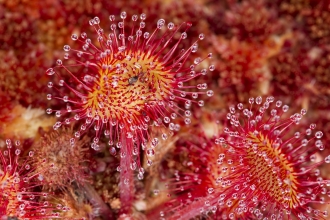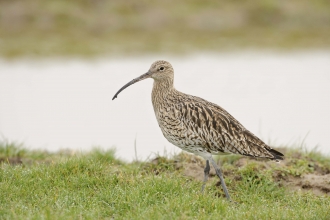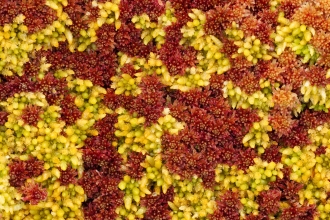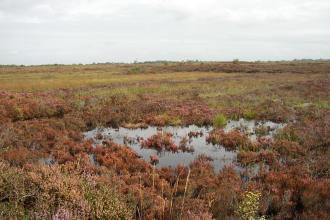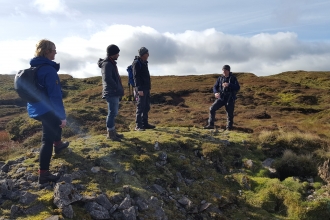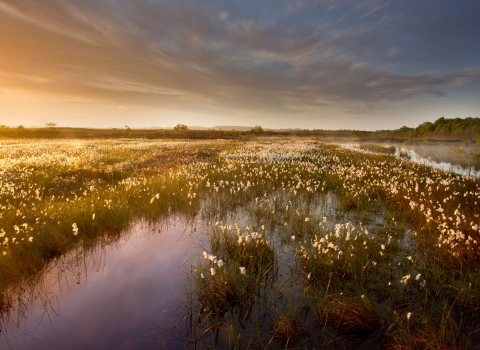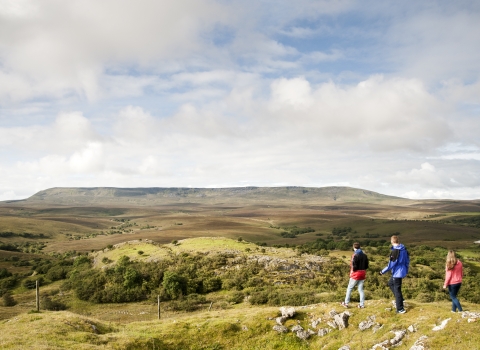When you look out over a bog what do you see? A bleak or barren landscape? Look a little closer.
Wild wonders
These dramatic landscapes are alive with the magnificent colours, scents and sounds of the plants and animals that call these hostile environments home. See the pink and purple heather punctuated by bright yellow bog asphodel and white tufts of bog cotton, underlain by a multi-coloured carpet of bog mosses and crimson specks of the carnivorous sundews. Smell the fresh peaty air and fragrant bog myrtle. Hear the haunting call of the curlew, the drumming of snipe and the warbling song of the skylark as it rises high and quickly falls.
Ranging from expansive blanket bogs cloaking the uplands, to lowland raised bogs which had their origins as glacial lakes, peatlands are indeed wild and compelling places. Formed over millennia, their depths hold a record of our ancient past.

